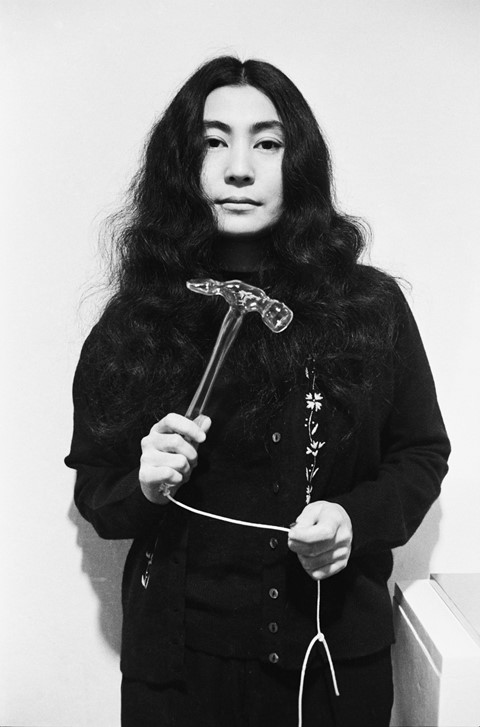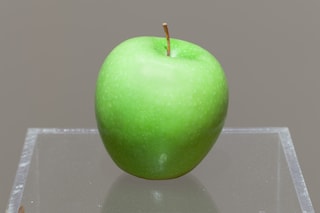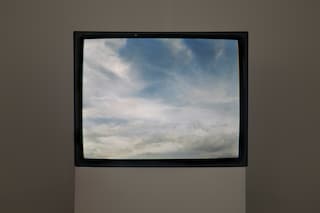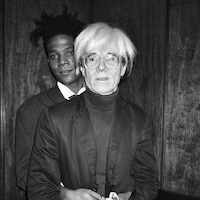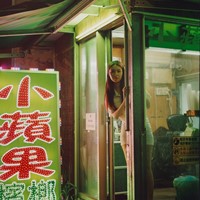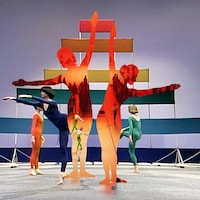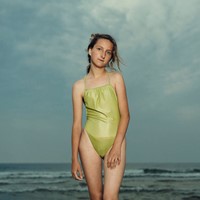As the major retrospective Yoko Ono: Music of the Mind opens in London, we delve into the artist’s 7-decades of groundbreaking art to extract some invaluable wisdom
To neatly categorise Yoko Ono into a specific art movement would be a disservice to her life and artistic practice. The now 90-year-old artist’s breadth of work takes on several forms: she composed music and poetry, used her art and celebrity as a vehicle of protest, surrendered herself to the mercy of strangers in Cut Piece, self-published a book of instruction paintings, and irrevocably altered conceptual art in the 1960s. This impressive and varied oeuvre even prompted the art critic Jonathan Jones to proclaim, “Is there any contemporary art style that Yoko Ono did not pioneer?”
Despite this, Ono’s artistic contributions in the 20th century were eclipsed by her relationship with John Lennon and for allegedly “breaking up the Beatles”. An unfortunate accusation that is somehow still a matter of contention decades later. However, over the last two decades, art institutions, such as San Francisco’s Museum of Modern Art in 2002 and the Serpentine Gallery in 2012, have carefully recontextualised her work, detached from the Lennon of it all. Focusing instead on how her art engaged with ideas of liberation, the horror of war and violence against women through its avant-garde aesthetic. This approach to her work underpins the upcoming retrospective of her artistic practice at the Tate Modern in London titled Yoko Ono: Music of the Mind.
The exhibition attempts to cover Yoko Ono’s prolific seven-decade career, showcasing over 200 works spanning photography, instruction pieces, and music. “Yoko Ono’s work has this incredible ability to alter how we view the world, and its significance cannot be underestimated,” explains assistant curator Andrew de Brún in a conversation with Dazed. “One of the things that we really hope people take away from the show is Ono’s call for collectivity and sense of hopefulness despite turbulent times.”
To celebrate the opening of this momentous exhibition of Ono’s art, we look back at some defining moments of her life and work.
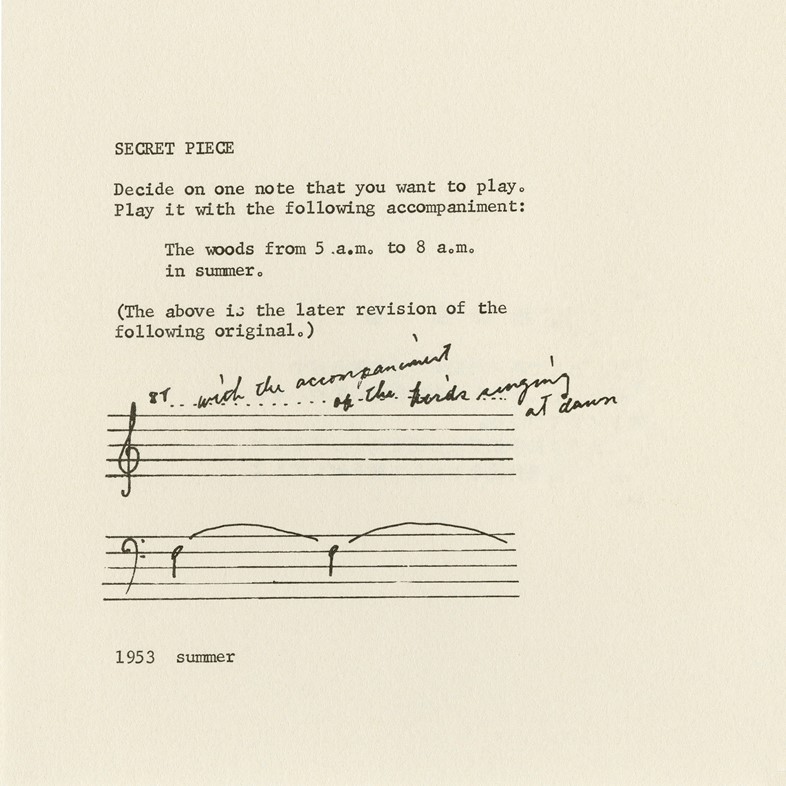
SHE COMMANDS ACTION
A simple command, such as “Light a match and watch it go out” in Lighting Piece (1955), constituted much of Yoko Ono’s earliest works. The young artist became part of Fluxus, an art movement that sought to disrupt the notion of fine arts – specifically by challenging the relationship between art and spectator. These event scores, later termed ‘instruction paintings’, were developed following her move from Japan to New York in 1953 to study at Sarah Lawrence and invited the audience to engage in acts of imagination and participation.
Ono’s self-published art book Grapefruit (1964) – often described as the pillar of conceptual art in the 1960s – was made up of these simple instructions and laid the foundation for much of her work during the time. With instructions such as, “Leave a piece of canvas or finished painting on the floor or in the street” in the score Painting to Be Stepped On (1960) or “Listen to the sound of the earth turning” in Earth Piece (1963), Ono’s audience was encouraged to interpret the pieces from their own perspective and ‘complete’ them in the present.
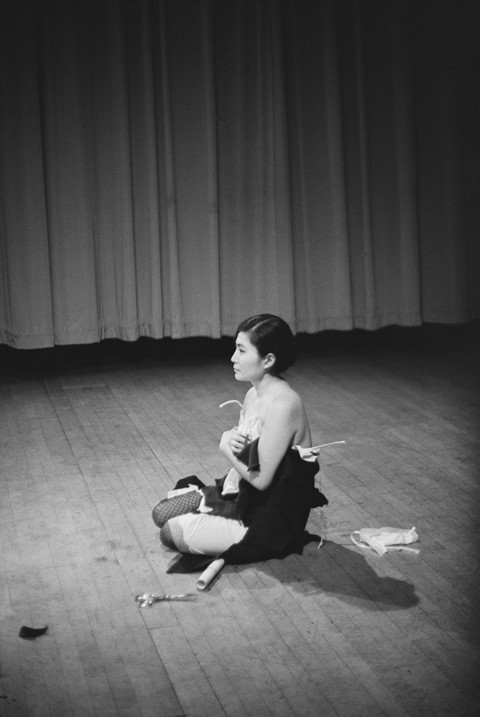
SHE INCORPORATED HER OWN BODY INTO HER WORK
In a performance piece that would become iconic, Ono invited the audience to participate in Cut Piece (1964). Seated motionless on stage, the audience was instructed to cut away pieces of her clothing and take them away with them. In the archival video documentation of the performance, the artist is seen submitting her body to strangers as they display varied levels of cruelty in how they cut the fragments of the garment of her body and, ultimately, become part of the artwork. While this is often seen as a work of feminist art, writing by art historians such as Julia Bryan-Wilson assert that the work applies more broadly to the impact of war on both men and women as the performer for Cut Piece is not bound by gender. Through this act, she probes the audience to explore themes of power and agency through the intersection between her own physical body and the aftereffects of violence.
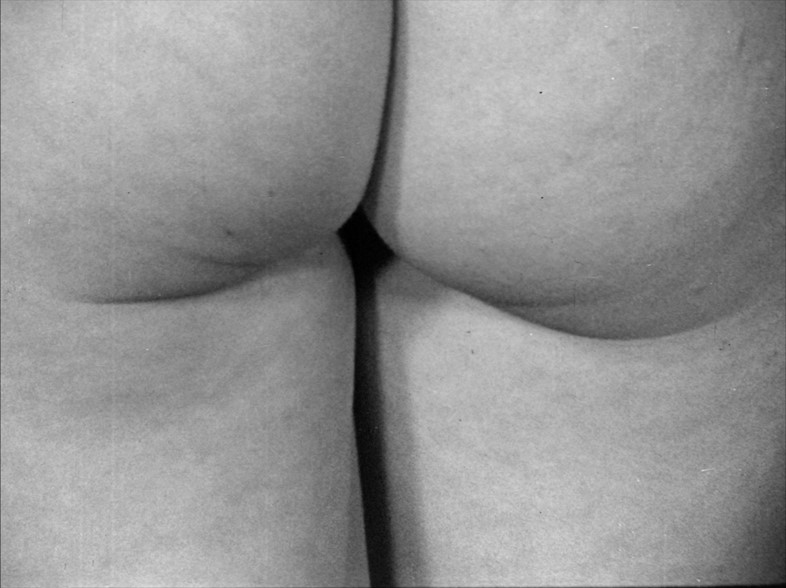
SHE DISRUPTED IDEAS OF SOCIETAL DECORUM
By the mid-1960s, Ono developed a keen interest in filmmaking. This saw her produce genre-defining avant-garde short films, specifically through her use of the singular shot to disrupt antiquated ideas of sexuality and the female body. In Ono’s 1966 film Bottoms, these bodies become landscapes, and the human form dissolves into abstraction. The picture, which is entirely black and white, features a number of nude bottoms in the form of close-up shots set against a harsh background. It was censored heavily in London and confiscated by customs upon being brought to America. With a soundtrack that consists of interviews of the people whose rears are on screen and their thoughts on the project, Ono begins to unravel what public perceptions of the project and Bottoms could entail.
In other films such as Freedom (1970), where the artist films herself for a minute trying to take her bra off, and Fly (1970) – based on the instruction ‘Let a fly walk on a woman's body from toe to head and fly out of the window’ – Ono continues to capture the unvarnished, unadulterated reality through her unrelenting repetition. Her films ask spectators to face their own uneasiness and reconsider ideas of vulnerability, intimacy, freedom and beauty.
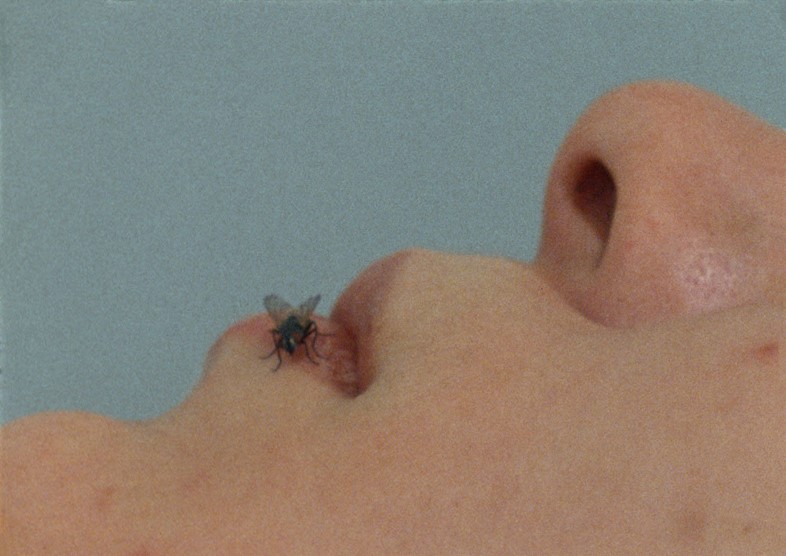
SHE SLICED A ROOM IN HALF IN A DESIRE FOR CONNECTION
First displayed in 1967 at the Lisson Gallery in London, Ono’s enigmatic installation Half a Room (1967) confronts the viewer with absence rather than presence, with the void left by what is missing rather than the solidity of what remains. Prompted by a day in the 1960s, when Ono’s boyfriend Anthony Cox had disappeared from their flat in London, she spliced a room cleanly in two to depict the absence of her ‘other half’. The work – a physical representation of the room with every object from the chairs to the teapot sliced in half – offers a disorienting glimpse into the fragmented nature of existence and the human condition. Through this spatial disruption and rendering the material objects on display ‘useless’ through its halving, Ono aptly captures the existential and turbulent unease of heartbreak. Like much of her work, Half a Room is a meditation on human connection and belonging.
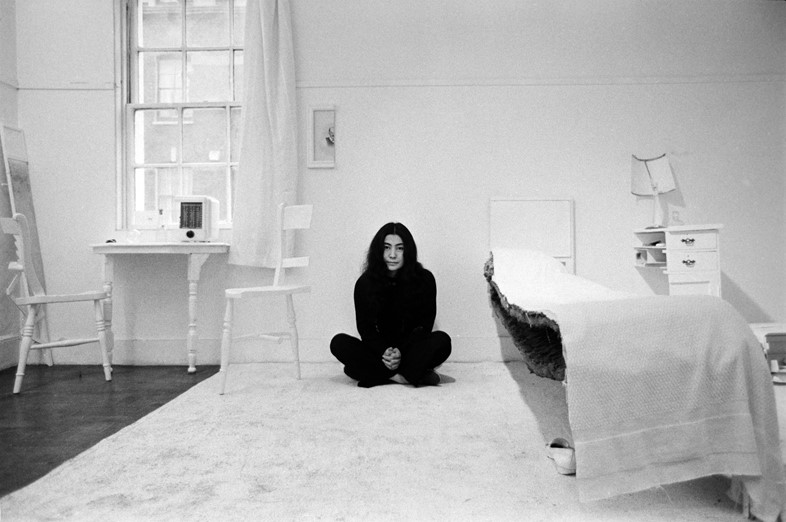
SHE USED HER CELEBRITY TO PROTEST WAR
In Yoko Ono’s two-week-long Bed-In for Peace (1969) in Montreal and then Amsterdam, the mundane becomes a platform for radical expression, and a bed is transformed into a site of protest and defiance. Foregrounded by Ono’s turbulent childhood – due to American Intervention in Japan in World War II and a desire to challenge the onslaught of violence caused by the American War in Vietnam – Ono and John Lennon retreated to the sanctuary of their hotel room and invited the press into their honeymoon suite to answer questions about the war and documented their interactions for the film Bed Peace, which was uploaded on Youtube in 2012 with the message: “WAR IS OVER If We Want It. It's up to us and nobody else.” Here, she uses their shared vulnerability and the power of their celebrity as one of the most famous couples in the world as a tool for social change.
While this act of resistance may not have led to material changes, it remains both deeply personal and profoundly political, a testament to the power of intimacy and solidarity in the face of injustice. Through this non-violent demonstration, Ono invites us to reconsider the boundaries of activism and the potential for transformative action in even the most unexpected of spaces.
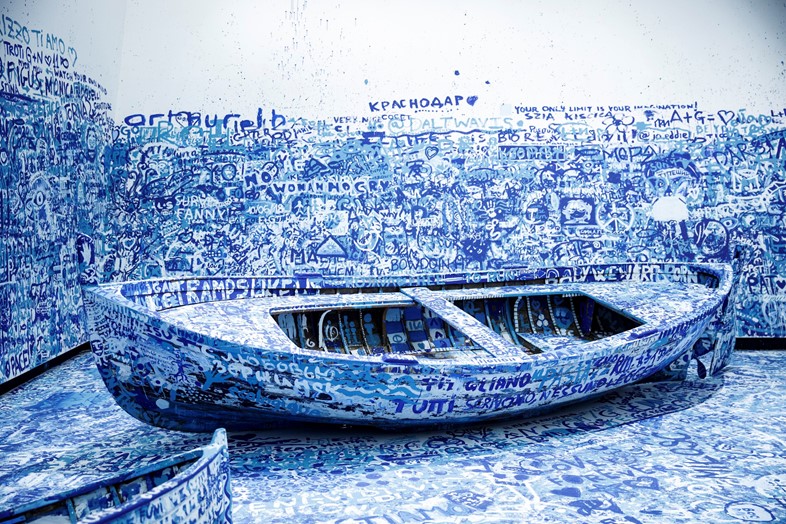
SHE CONTINUALLY ADVOCATES FOR PEACE
Ono’s artworks, particularly her later pieces, are imbued with a profound desire for global peace. This sentiment is evident in works like “Helmets (Pieces of Sky)” from 2001, which repurposes helmets from the Second World War adorned with blue puzzle images of the sky. Accompanied by instructions urging viewers to “Take a piece of sky” and to “Know that we are all part of each other”, Ono’s artwork serves as a poignant reminder of the universality of human emotions and how we are all connected as one.
In another project, “Add Color (Refugee Boat)” – conceived in 2016 in response to the crisis of mass displacement – Ono invites visitors to scribble, paint and draw on a white rowing boat and the stage that surrounds it. Ultimately, Ono’s broader artistic practice fosters a sense of coming together, but more importantly, it serves as an effective reminder of the ongoing catastrophic displacement of people from their homelands due to imperial intervention by America and Britain.
Yoko Ono: Music Of The Mind is running at Tate Modern from February 15 until September 1, 2024.
